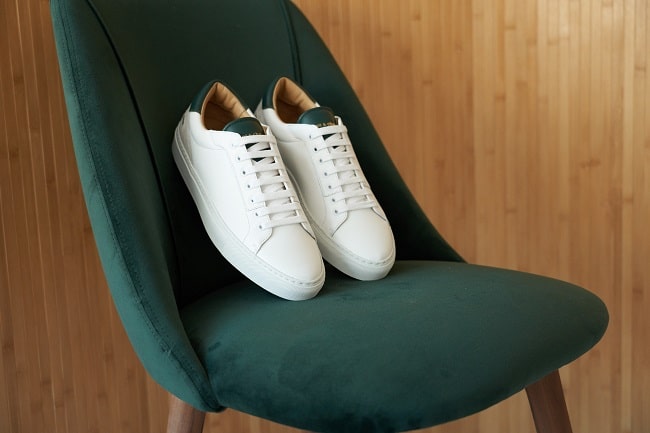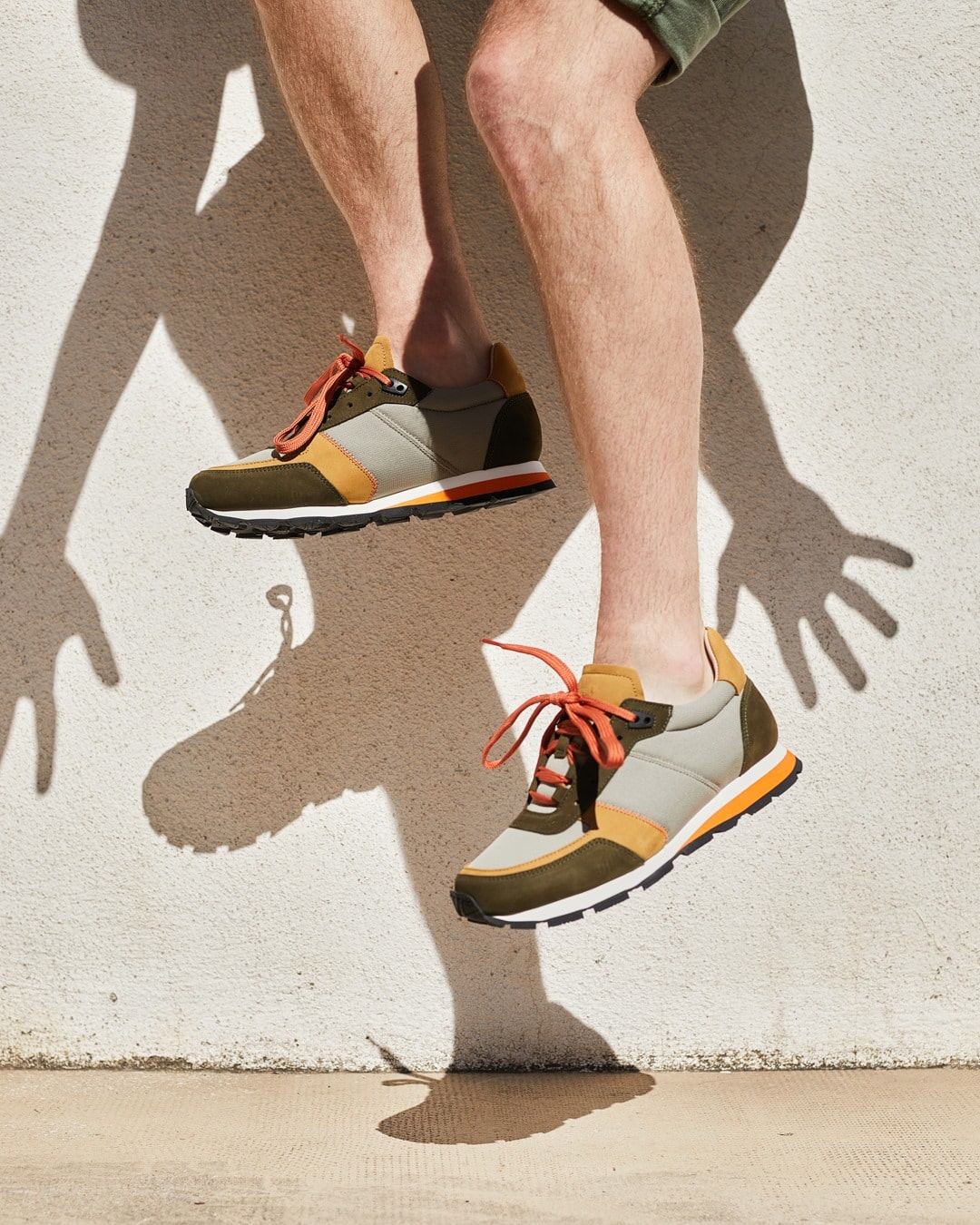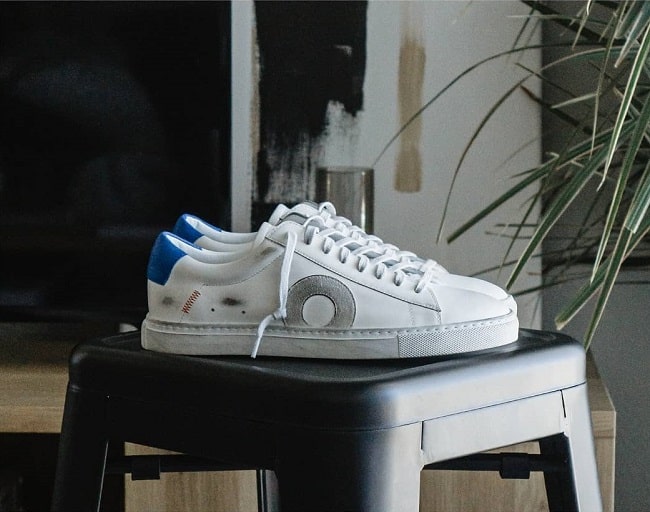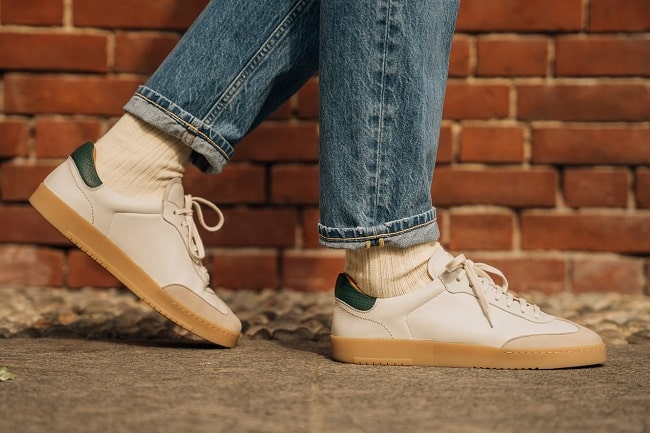1
HOME > Tips & Advice >
HOW TO TAKE CARE OF YOUR TRAINERS
Written by Ivan Yaskey in Tips & Advice on the 10th September 2021

For some, trainers are merely shoes – you wear them until you wear them out. Others see them as strictly practical: You lace them up before you work out. And, a third and more emerging group are those who collect them. The shoes get worn, but their upkeep ensures their value and longevity.
So your trainers aren’t sporting scuffs, frayed materials, or stains a couple months in (and are hence devalued, if you’re into that sort of thing), keep the following maintenance tips in mind:
Take Care from the Start
Yes, you can attempt to roll back major wear, but getting serious about maintaining your trainers starts from the moment you take them out of the box.
Depending upon their construction – primarily leather, synthetic, or canvas upper – apply a shoe protector or water-repellent spray. This combination not only keeps your feet relatively dry when you’re caught out in a drizzle but prevents dirt and debris from getting embedded in or otherwise marring the material. Come late fall and early winter, your kicks end up being better protected against more extreme weather.

Realise that weather-proofing sprays don’t last forever, so get in the habit of reapplying the solution every couple of months. If the material is sufficiently protected, you should see moisture bead up and roll down the exterior, rather than soak through.
On more of a day-to-day basis, treat your trainers like your suit. That might sound extreme, but the same type of technique applies: Use a brush, preferably with stiffer bristles, each day to dislodge any dirt and particles before they get trapped in the fabric and result in a grayish tint.
As well, laces contribute to the aesthetic, and if the material here looks fuzzy or frayed, even a spotless upper will seem off. Get in the habit of washing your laces – in the machine or a bowl of warm water with a stain remover or laundry detergent. Make sure they’re fully dry before re-lacing your shoes.

Consider Storage Conditions
Also on the subject of suits and apparel, storage conditions make a difference with your trainers, too. A shoe tree helps maintain their shape, but if you don’t have this hanging around, look for a material – newspaper or magazine sheets work well – for stuffing the interior. Just like shoe trees, paper-based materials also provide a degree of moisture and odour absorbency.
Beyond this general factor, think about how you keep your shoes stored. The way you might have locked them up as a teen or young adult – at the base of your wardrobe or in a vestibule piled up – distorts their shape. As well, stacking outsoles on top of insoles ends up spreading dirt around your entire collection, requiring more maintenance long term. Depending upon how you view your trainers, keep them on a shoe rack – even just an ordinary shelf will do – or return them to their original box to store and stack in your wardrobe.
Related to this, you tend to wear through your trainers sooner when you sport the same pair every day. Consider alternating styles among two or three sets so that your shoe collection lasts longer and that no single style displays a greater amount of wear than the others.

Get into a Cleaning Routine
You’ve probably seen dedicated cleaners for trainers. While these aren’t bad, they’re not superior to any all-purpose cleaner or dish soap you have paired with a toothbrush.
For spot cleaning – any time you see small stains or specks of dirt – combine water with all-purpose cleaner or dish soap, and target these areas with a toothbrush or clean cloth. Then, let the shoe fully dry before you wear it again. For materials that respond poorly to moisture like suede, avoid water entirely, and get in the habit of brushing off any dirt and debris.
For canvas and synthetic athletic shoes, a washing machine assists with big-picture cleaning. However, so you don’t cause additional damage, remove the laces before tossing the pair in, as these end up trapping dirt. Just as with your clothes, consider pre-treating your trainers’ upper with a stain remover or degreaser. Then, pay attention to the setting: Use a small amount of detergent, and wash the pair on cold.
After, avoid the dryer, and instead, have your trainers air dry. Once they’re no longer damp, stuff them with cloth, a towel, or paper to absorb any remaining moisture.

Don’t Forget Odours
Right now, you’re primarily focused on aesthetics. Yet, a strong odour indicates your trainers have experienced a good deal of wear.
For targeting this, you have a few strategies. One, think about how you clean your shoes in the washing machine. For all-around deodorising, add vinegar or a sports detergent to the load. Additionally, remove the insoles and clean them separately to prevent the scent from spreading throughout the material.
On a day-to-day basis, you can combat the scent of sweat with an odour-fighting or deodorizer spray or even adding baking soda. Just as it does in your refrigerator, baking soda – which should be removed before you wear your shoes again – helps absorb moisture and subsequent odours.

As well, think about where the odour originates from. Is it strictly from the insoles – or has it spread to the fabric? You may simply need to remove the insoles to let them air dry and apply deodorizer.
Yet, if the scent is already embedded in the fabric, the source may be how your foot sweats. Consider moisture-wicking socks whenever you wear your trainers, and supplement them with a moisture-absorbing solution once you take them off – tried and true newspaper or even dryer sheets can do the trick.

Trending
2
3
4
5
6
7
8
9
10










